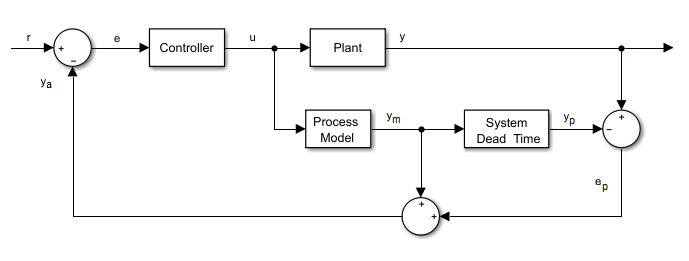Smith Predictor Controller
Discrete-time Smith dead-time compensator
Libraries:
Simscape /
Electrical /
Control /
General Control
Description
The Smith Predictor Controller block compensates for dead time by implementing a Smith dead-time PI control structure in discrete time. This diagram shows the equivalent circuit for the block.

Equations
The transfer function for a system with dead-time is
where:
τ is the system dead time.
Gp(s) is the process model.
Gf(s) is prediction error filter.
Examples
Ports
Input
Output
Parameters
References
[1] Velagic. J. "Design of Smith-like Predictive Controller with Communication with Communication Delay Adaptation."International Journal of Electrical, Computer, Energetic, Electronic and Communication Engineering. Vol 2, Number 11, 2008, pp. 2447-2481.
Extended Capabilities
Version History
Introduced in R2017b

